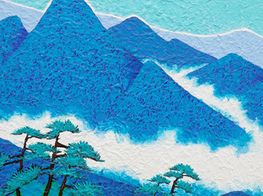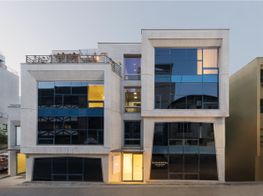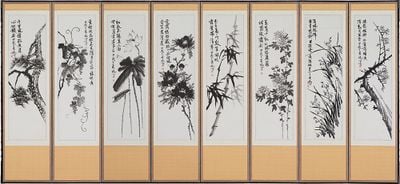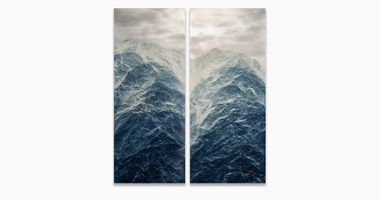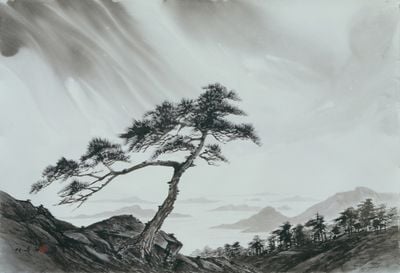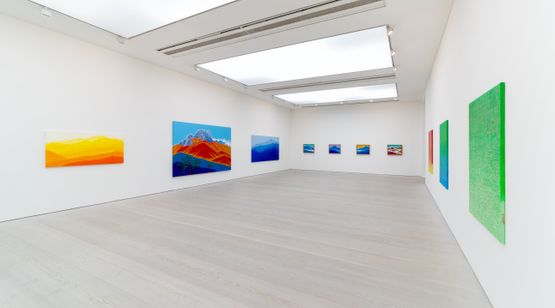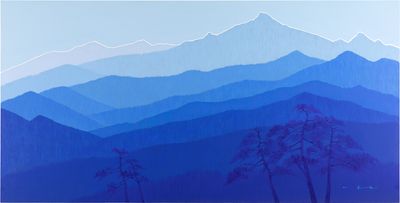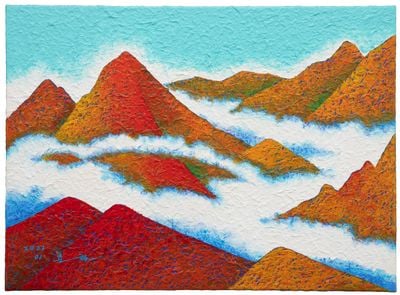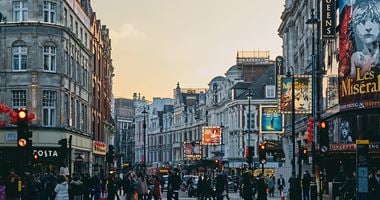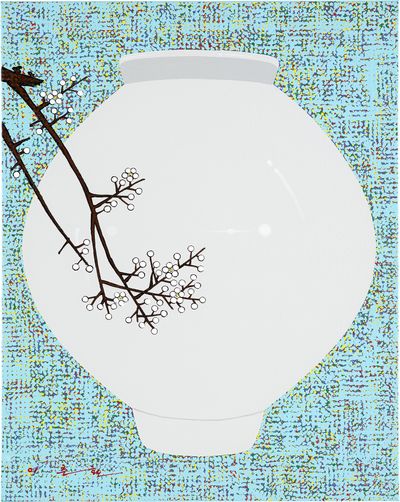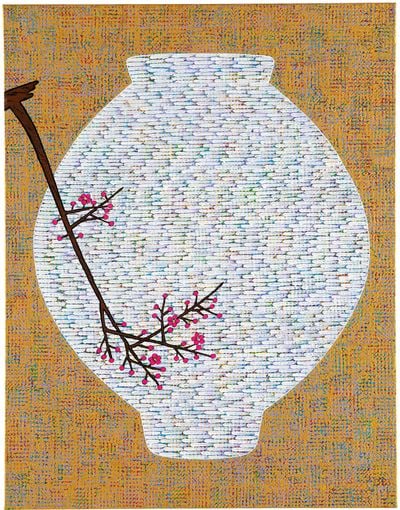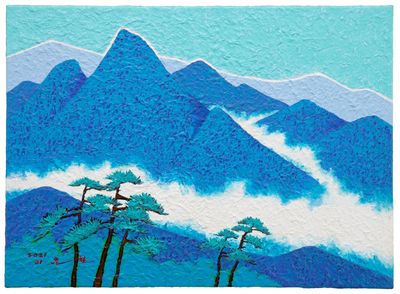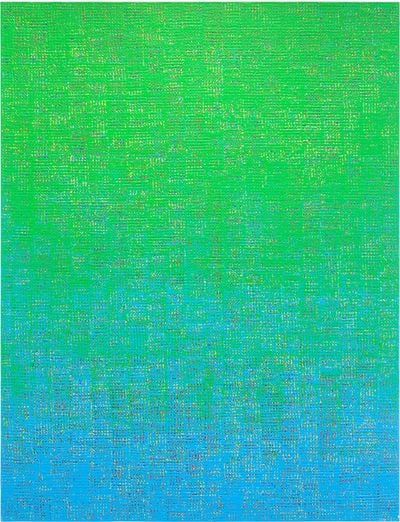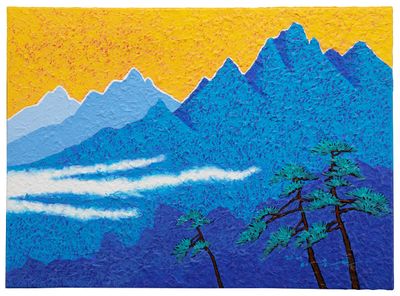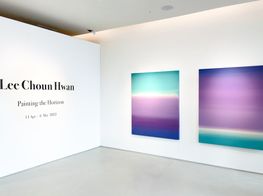Lee Choun Hwan's Paintings Mobilise Tradition Through Colour
Seojung Art | Sponsored Content
For more than four decades, Lee Choun Hwan has consistently returned to the mountainous landscapes and cultural symbols of South Korea across his paintings.
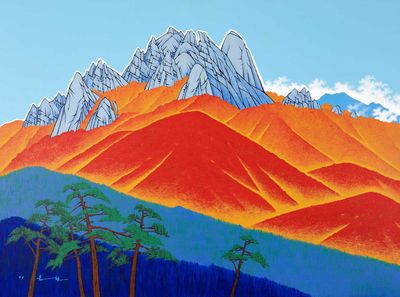
Lee Choun Hwan, The Mood of the Mountain #364 (2020). Mixed media on canvas. 218.2 x 290.9 cm. Courtesy Seojung Art.
Lee gained recognition in South Korea in the late 1970s and 80s for his ink and wash paintings, incorporating traditional subject matter into paintings such as Eight Fold Screen (1994).
Here, the Four Gentlemen—bamboo, chrysanthemum, orchid, and plum blossoms—are spread across eight paintings in a folding screen, or byeongpung in Korean.
Associated with the four seasons, the Four Gentlemen represent virtues such as humility, purity, and perseverance that were treasured by Korean literati, as were sansu—landscape paintings combining mountains and water.
Inspired by his hiking trips to the mountains across South Korea, Lee began creating landscape paintings in the early 2000s. In The Sound of Nature (2005), for instance, a slanted pine tree foregrounds mountain peaks surrounded by water.
Using ink and wash painting to produce a soft, poetic effect in The Sound of Nature, the artist's later mountain vistas incorporate vibrant fields of colour.
In Rooted Island, presented by Seoul's Seojung Art at Saatchi Gallery in London (31 March–4 April 2022), Lee's 'The Mood of the Mountain' series (2000–ongoing) contain near and distant mountains built up through analogous or complementary colours in varying shades.
Shades of blue make up gentle slopes in The Mood of the Mountain #577 (2021), while #903 echoes Lee's earlier ink and wash paintings in its greyscale colour palette.
The paintings' surface texture is enhanced, also, through Lee's incorporation of stone powders and hanji to heighten the mountains' materiality.
In #427 (2021), where the mountain ridges vary in colour from orange to deep red, with tinges of green in their recesses, an undertone of blue is visible through the coarse, web-like texture of hanji.
The saturated colours of 'The Mood of the Mountain' are similarly present in 'The Moon Jar', two of which are on view at Saatchi Gallery.
Ongoing since the early 2010s, the 'Moon Jar' paintings revolve around the eponymous white porcelain vessel that emerged in late 17th-century Joseon, defined by its round, moon-like shape.
Placing the moon jar in the centre of each canvas, Lee portrays it as a smooth expanse of light grey against a background made up of layered dots of paint, including obangsaek, or the five Korean traditional colours of white, red, blue, yellow, and black, that are then partially buried underneath a top layer of paint.
Pale green conceals the bright hues in The Moon Jar #186, while sky blue rests atop dots of blue, red, yellow, and green in #225 (both 2018).
Lee's use of the moon jar has been attributed to his search for 'Korean uniqueness' or 'beauty'.
This is in part a cultural phenomenon: pioneering abstract painter Kim Whan Ki was fascinated by its round form, while Koo Bon Chang was motivated to photograph Korean white porcelain after seeing a picture of a moon jar with British potter Lucie Rie.
In 2020, Seoul's Gallery NoW organised Why Are We Fascinated by the Moon Jar?, a group exhibition of artworks featuring the moon jar by nine contemporary artists.
The magic of the jar resides in its simple form, devoid of the rich ornamentation often found in other historical Korean porcelain such as Goryeo ware.
That simplicity has been interpreted variously: as an emblem of rustic Korean aesthetic, and one of moderation and restraint that reflects the honest and frugal lifestyle of seonbi—intellectuals of the Goryeo and Joseon periods.
Lee's impetus for painting the moon jar is also personal. Moved by his acquaintance with the late Beopjeong—a Buddhist monk known for his concept of musoyu, or non-possession spirit—the artist found space for meditation in the moon jar by surrounding its silhouette with repetitive strokes of paint.
An overdependence on the reading of Lee's paintings for their 'Koreanness' can, however, obscure his efforts to mobilise traditions and cultural symbols.
While Lee's use of bright colours might be seen as the result of engagement with Western painting, minhwa (Korean folk art), architecture, and dress, along with bojagi or the traditional wrapping cloth and saekdong—a type of hanbok—are all characterised by vibrant colour.
The conversation between colour, form, and surface is notable in works by Lee such as Saekdongwalmae #546 (2022), in which the moon jar's otherwise smooth whiteness is coated with vivid colours.
From mountains to centuries-old ceramic forms, Lee usurps seemingly static markers of culture, playing around with what can be as opposed to what ought to be. —[O]

